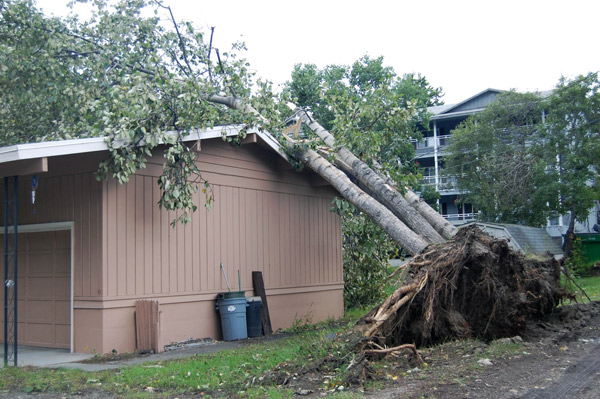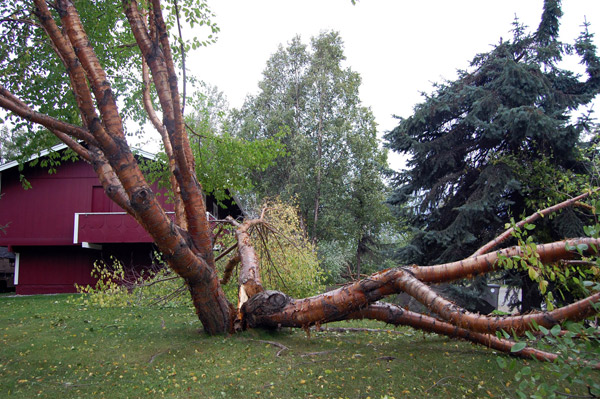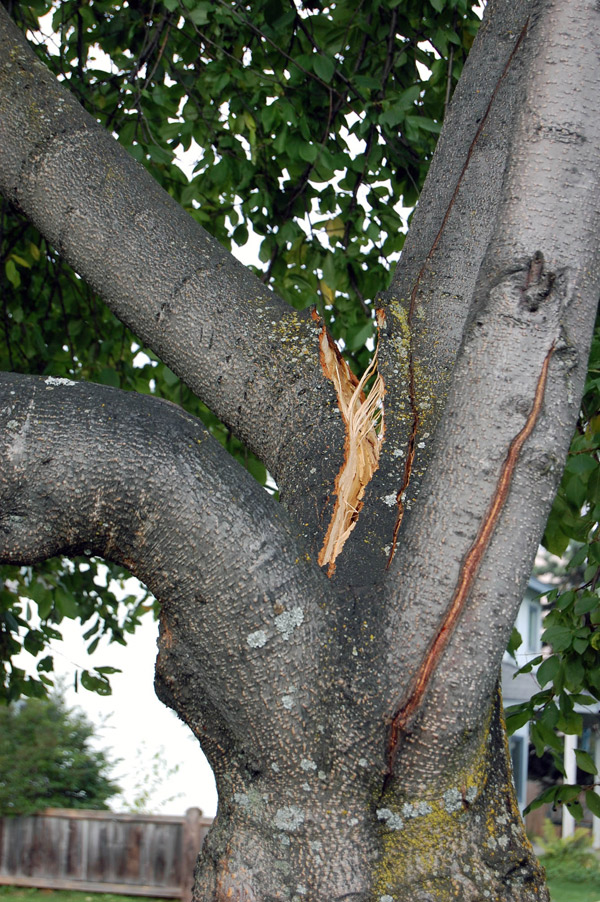
Did you lose trees in the big blow on Sept. 4?
According to Patricia Joyner of the Community Forestry Program for the state, thousands of trees snapped, cracked and tumbled in one of the worst windstorms to ever hit Anchorage. Some of the tree loss was inevitable, she says, but some of it was preventable.
In the aftermath of the storm, what kind of tree damage did experts see? How can we select more appropriate species for our area? How can we plant and maintain trees so they can withstand windstorms? Is there a reasonable life expectancy for various tree types?
As a homeowner in Anchorage, I always thought trees just grew bigger and older and more graceful with time. I didn’t know they needed maintenance and care. Because I have two lovely old birch in my front yard, this summer I called an arborist and asked for advice. He put me on his waiting list for some clean up work on the two trees before snowfall, and assured me my trees had many good years left.
Then, the windstorm hit. My trees weathered it, but — with so much clean-up work around town, I wasn’t expecting to see that arborist until spring. But just the other day, they called to say all the extra work has delayed their scheduled maintenance, but they’ll still come, even after the snow falls!
If you’re like me, you have questions about the trees in your yard. Bring them to Hometown Alaska when Patricia Joyner of the Alaska Division of Forestry, and Jim Flott, an arborist with more than 30 years experience, join host Kathleen McCoy to learn how wind damages trees and what you can do to protect yours.
In addition, check the links below for details on a tree conference in Anchorage Sept. 20-21 at Gorsuch Commons on the UAA campus, called “The Urban Forest of Tomorrow: Planning for clear air, water and habitat,” and other community tree stewardship programs. See more photos, provided by the Community Forestry Program, at the bottom of this post.
GUESTS:
- Patricia Joyner, Community Forestry Program, Alaska Division of Forestry
- Jim Flott, arborist with more than 30 years of experience
- Mike Post, arborist, Tall Trees tree service in Anchorage
LINKS:
- Landscape Plants for Alaska: find out what trees will thrive here
- How to prevent hazardous trees, Pacific NW Chapter, Int’l Society of Aboriculture
- The Urban Forest of Tomorrow, Sept. 20-21 conference website
- The Urban Forest of Tomorrow, Sept. 20-21 conference brochure (PDF)
- Alaska Division of Forestry Community Forestry Program
- How to hire an arborist for your trees
- Alaska and national tree-related resources
- Muni Parks & Rec Homepage, who to call about tree concerns in city parks
- (907) 343-4554, if you need to speak to someone in Parks & Rec
- Muni Park & Rec online feedback form
- Cooperative Extension Service
- Tree Care Industry Association (Tree Care Tips)
PARTICIPATE:
- Call 550-8433 (Anchorage) or 1-888-353-5752 (statewide) during the live broadcast (2:00 – 3:00pm)
- Send e-mail to hometown@alaskapublic.org before, during or after the live broadcast (e-mails may be read on air)
- Post your comment or question below (comments may be read on air)
HOST: Kathleen McCoy
LIVE BROADCAST: Wednesday, September 19, 2012, 2:00 – 3:00 pm (Alaska time)
SUBSCRIBE: Get Hometown, Alaska updates automatically— via e-mail, RSS or podcasts







